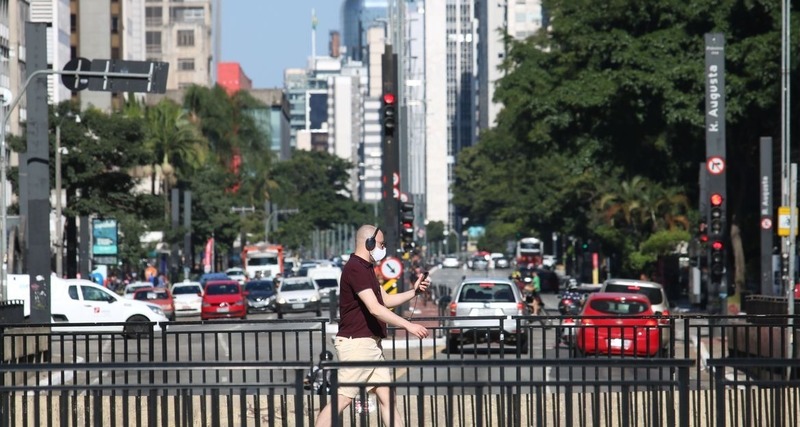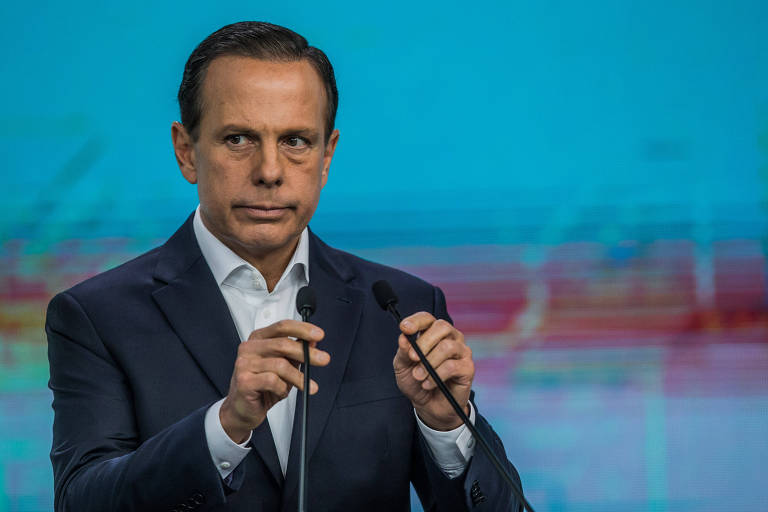RIO DE JANEIRO, BRAZIL – With a high rate of coronavirus transmission and hospitalizations in the state of São Paulo, the contingency center will propose to the João Doria government that it again harden social isolation measures.
Folha newspaper found that part of the group advocates that the whole state should revert to the yellow phase, which allows the opening of establishments but limits the working schedule. The proposal was submitted to Doria on Thursday, November 26th.
“Unfortunately it is happening all over Brazil,” said Doria, regarding the new growth in infections in an online interview to Bloomberg on Wednesday. “We have to accept that people are tired, exhausted from isolation, from distancing, from wearing masks.”

“The São Paulo plan assesses regions for infection evolution or its regression, the evolution or regression of deaths, and also the number of ICU and primary beds. This enables a daily assessment,” said Doria. “In São Paulo, if we need to recede to secure people’s lives and health, we will do so.”
The number of people hospitalized with Covid in ICUs in the state grew by 22%, comparing this Wednesday, November 25th with two weeks ago, according to data from the São Paulo Health Secretariat.
The rise was even more significant if only Greater São Paulo is considered (30%). There are 2,400 people hospitalized in ICUs in the region (the government data considers the average of the past seven days).
The portfolio said that the issue with the Ministry of Health’s database at the start of the month, when new cases and deaths were not entered, did not affect the information on hospitalizations.
Currently, 76% of São Paulo’s municipalities, including the capital, are in the São Paulo Plan’s green phase, which provides for the controlled reopening of virtually all activities, including cinemas and theaters.
In 16 of the state’s 22 subregions, the infection rate (RT) – which shows how many people will be contaminated by an infected person and helps to estimate the speed of transmission of the disease – is higher than one. The figure must fall below one for the downward trend in cases to be maintained.
In the São Paulo regions of Registro and Presidente Prudente, the RT stands at 2.1 and 2.04, respectively. In the capital, it is 1.55.
The data are from the InfoTracker project, from USP (University of São Paulo) and UNESP (State University of São Paulo), which has been monitoring the pandemic in the state since its very beginning. The platform made an adjustment to the days that were not updated by the Ministry of Health to mitigate the late notification issue.
According to epidemiologist Paulo Menezes, professor at USP’s preventive health department and member of the contingency center, the situation is very worrying and has worsened in the past week.
“There has been an important increase in viral transmission and this now reflects in the number of cases and hospitalizations. Deaths take longer to emerge.”
According to Menezes, although the state has ICU occupancy rates of less than 50%, it is crucial to interrupt the transmission of the virus at this time.
“Society, particularly young adults, understood that the green phase is a sign that they can do whatever they want, go to bars, clubs, family parties. And the consequence was quick,” Menezes says.
In the capital, of the 811 people hospitalized in municipal hospitals and outsourced by the city hall through Tuesday, November 24th, 451 were in intensive care – 240 on mechanical ventilation. The ICU occupancy rate stands at 47%.

“The increase in cases is beginning to be noted also in the interior of São Paulo. The perception is that they are spreading from the capital and Greater São Paulo to the rest of the state,” says Wallace Casaca, professor at UNESP and InfoTracker coordinator.
According to Casaca, this increase in contagion may reflect a combination of three factors: a “very rapid” flexibilization of economic resumption plans; non-compliance by the population with basic health measures; and the municipal electoral period, which led to crowds.
Menezes also considers the population’s relaxation in relation to quarantine and electoral campaigns, particularly for city councilors. “They involved much direct contact, many people crowded.”
In Brazil, all regions have coronavirus infection rates above one. In the country as a whole, the RT stands at 1.54 and is now increasing in relation to the 1.30 rate projected by Imperial College London, which took into account epidemiological data up to November 16th.
The lack of massive testing, in particular, to try to detect suspected cases, is also seen as another important factor in the rise in cases. “If I don’t test, even the mildest cases, I can’t determine the outbreaks of the disease. And these people spread it to others,” says Casaca.
According to him, many cities have chosen not to test the milder cases, choosing only to direct these people to remain quarantined.
For Suzana Lobo, president of AMIB (Brazilian Intensive Care Medicine Association), the increase in cases and hospitalizations also raises another concern: the exhaustion of healthcare professionals.
“Everyone wants to go on vacation. The staff hasn’t rested and everything is starting to come back again. In the first wave, everyone was ready for war. Now, they’re all a bit shaken up, we don’t know where we’re going to draw strength from, but we will have to.”
In a note, the CVE (Center for Epidemiological Monitoring) of the São Paulo government says it is unaware of the denominator and methodology used by Infotracker to estimate the RT and, therefore, would not comment on the data.
The CVE argues that the RT is not an epidemiological indicator capable of reflecting the circulation of the coronavirus in isolation, nor the effective impact of the pandemic in the state, since the monitoring and analysis must be multifactorial.
“This is conducted in the state through the São Paulo Plan, with seven different indicators, consistently combined for the assessment of the health system’s preparedness to respond and the development of the pandemic and, consequently, classification according to the plan’s phases.”
He recalls that the São Paulo government has already reported, with full transparency, the increase in Covid-19 hospitalizations, and continues to monitor the healthcare network to make decisions based on science and health.
Source: Folhapress

